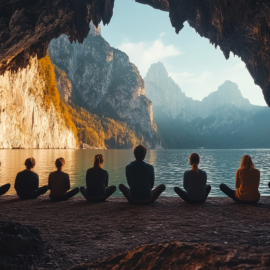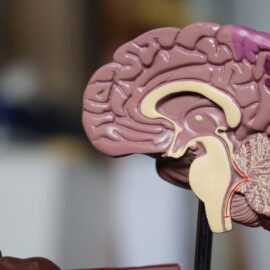

This article is an excerpt from the Shortform book guide to "The Laws Of Human Nature" by Robert Greene. Shortform has the world's best summaries and analyses of books you should be reading.
Like this article? Sign up for a free trial here .
What is self-image? Why is a self-image important and how does it change how you succeed?
When asking “what is self-image” it’s important to take into account how our views of ourselves are shaped and why. Once you have a self-image, it then goes on to shape how others see you, too.
Keep reading to answer the question, “what is self-image?”
What Is Self-Image?
Attention is a fundamental human need that motivates almost all human behavior. For example, some people who don’t get enough attention turn to the spotlight of crime. However, while everyone wants constant attention, it’s a limited resoseurce—everyone has to spread their attention among all the people they know and interact with. We need attention in two ways:
- Physical. We need eye contact and for people to look at us to confirm that we exist.
- Psychological. We need high-quality attention to maintain our self-worth.
While we can’t always control how much physical attention we get, we have come up with a way to cope with a psychological attention deficit—we create (usually unconsciously) a self-image or self-opinion, which is an internal conception of ourselves that we can use to give ourselves our own attention. When we need more attention, have low self-esteem, or feel bad about ourselves, we can turn inward and admire our vision of ourselves.
Understanding, assessing, and validating people’s self-images is a large part of applying the laws in Part 1.
What Does It Look Like?
So what is self-image? Self-images are rose-tinted versions of what we’re like in reality—we tend to boost our positive qualities and minimize our negative ones. The earliest versions of our self-images, developed between the ages of two and five, tend to have the qualities we admire in our parents. For example, if our mother is loving, our self-image tends to be loving too.
However, we can only edit our self-images to a certain extent—if our self-image is too different from what we’re really like, other people will notice and tell us, and then we’ll be full of self-doubt.
What is self-image? Almost everyone’s self-image includes the following traits:
1. They believe they have free will. Whenever people do something, they believe they’ve chosen to do it. In reality, they might have been manipulated into action—for example, by peer pressure—but they so prefer to believe in their autonomy that they fool themselves. In cases where they can’t deny that they’ve been coerced—such as following orders—they either resent the coercion or decide they’re choosing to do the action they’re being forced to do.
2. They believe they’re smart. Almost everyone believes they’re intelligent in some way. They might admit that they’re not a genius like Einstein, but they’re proud of their street smarts, common sense, manual skills, and so on. No one wants to believe they’re stupid or gullible.
3. They believe they’re good. People like to think that they treat others well, support causes, and act collaboratively, and if they clash with others, they think of it as “tough love.”
- For example, many people who donate money want their names publicly displayed on a sponsor list so everyone can see how good they are.
So what is self-image and where does it come from? People additionally have self-opinions about their specific insecurities, which usually come from childhood. Most of these self-opinions include superiority. For example, if someone thinks of herself as independent, she’ll tend to think that being independent is a positive trait and that her independence levels are superior to others’.
Now that you know the answer to the question “what is self-image?” you can consider your own self-image, and how you may improve it.

———End of Preview———
Like what you just read? Read the rest of the world's best book summary and analysis of Robert Greene's "The Laws Of Human Nature" at Shortform .
Here's what you'll find in our full The Laws Of Human Nature summary :
- Why it's in your nature to self-sabotage
- How you behave differently when you're in a group
- Why you're wired to want the wrong things in life






